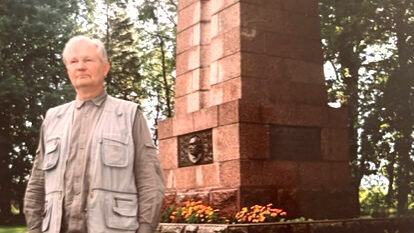The far-left Syriza in Greece did even better than its polar opposite party with 16.78% of the vote and is aiming to be part of a government coalition; the communist KKE got 8.84%. In Italy, however, the far right suffered serious defeat in Italy's local elections and in Britain the far-right British National Party was wiped out also in local elections. One must differentiate between far right parties by their geographical location. A more culturally conservative and Christian-based “far-right” has long been established in western and northern Europe and is not identified by the anti-Semitism and racial superiority themes of the more recent “far right” movements.
Many also expound anti-migrant, anti-Muslim positions. They have been typified as populist parties such as the National Front in France, the Freedom Party of Austria, the Progress Party of Norway, the Danish People's Party and the True Finns of Finland whose voters see themselves, curiously enough, as the most left-wing voters on the far right of the Finnish political spectrum.
Not all of these parties are cut from the same swath of cloth. (A True Finn parliamentarian made a proposal recently to have circumcision banned in the country.) They descend from different ideological backgrounds. Analysts point out that: Hungary's Jobbik party and the Bristh BNP originate from a neo-nazi and racist background; the True Finns, Dansk Folkeparti and Norway's Fremskrittspartiet evolved from populist protest; the Swiss People's Party is rooted in the countryside; before a change of leadership the Austrian Freedom Party concentrated on environmental issues; the Belgian Vlaams Belang and the Italian
The surge in support for the radical right and the radical left is attributed by many as failures by governments and centre left and right parties to respond to citizens' concerns. Although Estonia has an abundance of dissatisfied voters, their reluctance or failure or unwillingness to rally around extreme groupings in sufficient numbers to affect the outcomes of local or parliamentary elections is seen, at least currently, as a manifestation of Estonia's political culture. Many observers internationally have explained the absence of any visceral protest or the formation of extreme anti-government actions to austerity programs in Estonia to be part of the Estonian chareatcter – grit-and-bear-it.
However, some academics have offered the following explanation. a) Materialistic values dominate. Economic growth, material well being, salaries are the focus even during campaign debates. b) Estonia is identified as having politically a masculine orientation with self-realization, success, competition as the key characteristics. c) A nationalistic worldview drawn from historic experience colours political discourse no matter what the specific topic on hand. d) Individualism is valued higher than collectivism and thus group efforts and wide co-operation to gain certain goals is weakly instilled. e) Citizenship as a political factor is not well recognized and not seen as a responsibility for involvement of government affairs. f) The rejection a strong central power derives from a loathing of the repressive communist system; a minimal government is the ideal. g) The Estonian orientation for change and challenges was especially evident during the first years after regaining independence when radical change and reorientation helped in a rapid development of democratic institutions and a market economy. h) Tolerance of uncertainty lets Estonians tolerate unpredictable political decisions and reject suffocating government planning with its accompanying bureaucracy. i) Agreeing with decisions based on majority rule, not necessary derived from consensus, lead voters to accept governing party rule. j) Political parties compete more through images rather than ideology. The tendency of a conservative orientation results in weak left-wing-oriented political groupings and campaign debate centres on a narrow sector of possible ideological argument. The above of course must be compared with measurements against similar parameters in other countries.
Amongst the “New Europe” of central and east European countries, Estonia stands out as the only state that hasn't seen the creation of a successful new political force in the last four years, where the number of parties have actually decreased. Some have described the phenomenon as boring. Time will tell if political tedium is a bane or blessing for the well-being of a country.
Laas Leivat




